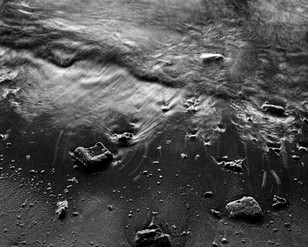Forensics of the Thames
- siladan010
- May 12
- 3 min read
Updated: May 15
As planned, I returned to keep making work on the Thames. I don’t feel I am finished with the series of water splashing on the stairs or the photos of the stairs themselves and I still have this obsession that I cant explain about walking arround the river.
I wanted to create some cameraless images on this roll of paper that I got specifically for the end of the MA. But then I thought, since someone else in our group is working with a roll and they have a very strong concept, maybe it wouldn’t work well for me. This was also something we discussed during my tutorial with Jonathan. I think this is part of my process too: “what happens if I keep the roll for longer?” “What happens if not just yet?”
Since I had the motivation, I went back to the Thames, but this time with the 5x4 camera using B&W film, previously I used digital. I tried to stay away from what I already photographed, but it was hard. It’s still hard. Observing the water splashing on to the stairs is very hypnotising.
This weekend was my fourth trip. I’ve messed up some films previously, and even the ones I managed to expose and process correctly are not quite what I was looking for visually.
But I feel that on this last trip I started to develop new visuals.

My camera is now pointing down to the riverbed, as the tide goes down, revealing what’s hidden.
The process feels forensic or archaeological, linvestigating somehow the history of the river. Looking at traces the tide leaves behind. Bringing to light the washed memories.
My thoughts are partially busy with the technical details of making each photograph. The process has many steps:
• Choosing the place to look at. It needs to be specific. There must be something intriguing about the place. I walk alongside the water on the few Thames beaches. This weekend I was on the one near Tower Bridge. When something is catching my attention:
I stop to observe.
• Placing the tripod
• Installing the camera
• framing and focusing, which involves using a 10x magnifier, covering my head and the camera with a black cloth to see the image on the ground glass. The image is projected on to the ground glass left to right and inverted.
• Closing the live view on the lens, after I’m happy with the framing and focus is correct. I shoot on 150mm lens and wish in 35mm format is equivalent with about 50mm.
• Measuring the light
• Setting the aperture, usually f/22 or f/32 for greater depth of field and sharpness
• Based on the reading, dividing the exposure time into several quicker exposures
• Possibly adding an ND filter if there’s too much light
• Installing the film holder and removing the dark slide
• Synchronising with the river and making the exposures
• Reinserting the dark slide
• Removing the film holder
• Then maybe taking another shot, or moving on to find another site to investigate
While my dyslexic brain tries to manage the technical script, often double or triple-checking every step, my mind begins to wander. It drifts into stories the river might tell.
I see things in my mind’s eye: people drowning, lost belongings, ships bringing in stolen colonial goods, money, power, poverty. Children swimming. Mothers crying.
The pollution of the city dumped endlessly into the same waters that made this place into a city. The water is filthy. The smell is so thick.
I see the river is an archive. Unsettled, but is forever unsettled with every tide. Each ebb is revealing the same river bed but in a different state. I photograph what’s left behind, the most hidden stories








